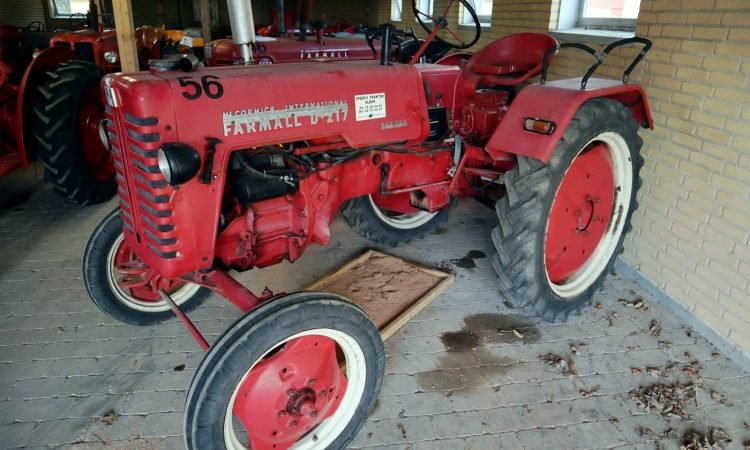McCormick Farmall D-217
#Vintage Tractor
#Oldtimer
# Classic Tractor
# Veterantraktor
This tractor is in good condition but has not been tested. Interested buyers are asked to form their own opinion about the condition of the tractor during the inspection.
Inspection and delivery by appointment only. Payment before delivery.
This tractor comes from a collection of 35 vintage tractors in Denmark from a now deceased collector. All tractors were purchased from the estate and taken to our warehouse in Skjød and sold from there.
Pls. contact me for more details. I speak English and German.
The McCormick Farmall D-217 is a row-crop tractor, that was produced from 1956 to 1962 by International Harvester in Neuss, Germany. A total of 10145 were produced.
In the USA it was sold as International Harvester D-217 (standard chassis) and Farmall D217 (row-crop chassis).
The original Farmall is widely viewed as the first tractor to combine a set of traits that would define the row-crop tractor category, although competition in the category came quickly. Although it was not the first tractor to have any one of these traits, it was early in bringing the winning combination to market. The traits included (a) 'tricycle' configuration (a single front wheel or narrowly spaced pair), high ground clearance, quickly adjustable axle track, excellent visibility all around and under the machine, and light weight; (b) sufficient power for plowing and harrowing, and a belt pulley for belt work; and (c) all at low cost, with a familiar brand and an extensive distribution and service network. The first group of traits allowed for more nimble maneuvering and accurate cultivation than most other tractors of the day; additionally, because of the second group, the Farmall could also, like previous tractors, perform all the other duties a farmer would have previously achieved using a team of horses. A tractor could yield lower overall operating costs than horses as long as it was priced right and reliable[1][2] (and its fuel supply as well). The Farmall, mass-produced with the same low-cost-and-high-value ethos as the Ford Model T or Fordson tractor, could meet that requirement. The Farmall was thus similar to a Fordson in its capabilities and affordability, but with better cultivating ability.
Descriptions of tractors as “general-purpose" and “all-purpose" had been used loosely and interchangeably in the teens and early twenties; but a true all-purpose tractor would be one that not only brought power to ploughing, harrowing, and belt work but also obviated the horse team entirely. This latter step is what changed the financial picture to heavily favor the mechanization of agriculture. The Farmall was so successful at total horse replacement that it became a strong-selling product.




























You must Register or Login to post a comment